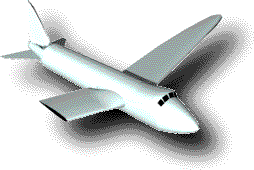Aerodynamics of Wind Turbines: Lift
![]()
The rotor consisting of the rotor blades and the hub are placed upwind of the tower and the nacelle on most
modern wind turbines. This is primarily done because the air current behind
the tower is very irregular (turbulent).
What
makes the rotor turn?
 The answer seems obvious - the wind.
The answer seems obvious - the wind.
![]() But actually, it is a bit more complicated than just the air molecules
hitting the front of the rotor blades. Modern wind turbines borrow technologies
known from aeroplanes and helicopters, plus a few advanced tricks of their
own, because wind turbines actually work in a very different environment
with changing wind speeds and changing wind directions.
But actually, it is a bit more complicated than just the air molecules
hitting the front of the rotor blades. Modern wind turbines borrow technologies
known from aeroplanes and helicopters, plus a few advanced tricks of their
own, because wind turbines actually work in a very different environment
with changing wind speeds and changing wind directions.
Lift![]()
 Have a look at the animation of the cut-off profile (cross
section) of the wing of an aircraft. The reason why an aeroplane can fly
is that the air sliding along the upper surface of the wing will move faster
than on the lower surface.
Have a look at the animation of the cut-off profile (cross
section) of the wing of an aircraft. The reason why an aeroplane can fly
is that the air sliding along the upper surface of the wing will move faster
than on the lower surface.
![]() This means that the pressure will be lowest on the upper surface. This
creates the lift, i.e. the force pulling upwards that enables the
plane to fly.
This means that the pressure will be lowest on the upper surface. This
creates the lift, i.e. the force pulling upwards that enables the
plane to fly.
![]() The lift is perpendicular to the direction of the wind. The lift
phenomenon has been well known for centuries to people who do roofing work:
They know from experience that roof material on the lee side of the roof
(the side not facing the wind) is torn off quickly, if the roofing material
is not properly attached to its substructure.
The lift is perpendicular to the direction of the wind. The lift
phenomenon has been well known for centuries to people who do roofing work:
They know from experience that roof material on the lee side of the roof
(the side not facing the wind) is torn off quickly, if the roofing material
is not properly attached to its substructure.
![]()
|
Back | Home |
Forward |
© Copyright 1998 Soren Krohn. All rights reserved.
Updated 6 August 2000
http://www.windpower.org/tout/wtrb/lift.htm